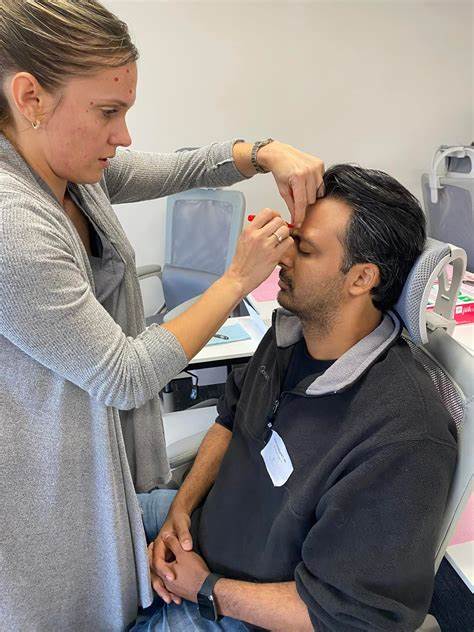
Botox has become a popular name in cosmetic treatments, but many people are curious about the science behind it. What exactly is Botox, how does it work, and what should you expect from the treatment? Let’s dive into the details and clear up some of the mysteries surrounding this well-known cosmetic procedure.
What is Botox?
Botox is a brand name for a purified form of botulinum toxin type A, a neurotoxic protein produced by the bacterium Clostridium botulinum. While botulinum toxin might sound intimidating, Botox is used in very small, controlled doses to achieve therapeutic and cosmetic results.
How Does Botox Work?
To understand how Botox works, it helps to know a bit about the anatomy of facial expressions. Our facial expressions are controlled by muscles beneath the skin. These muscles are activated by nerve signals that cause them to contract. For example, when you smile, the muscles around your mouth contract to create that expression.
Botox interferes with this process. Here’s a step-by-step look at how Botox works:
- Injection: Botox is injected into targeted facial muscles using a fine needle. The amount of Botox injected is carefully measured to ensure precise results.
- Nerve Blockade: Once injected, Botox travels to the nerve endings in the muscle. It blocks the release of acetylcholine, a neurotransmitter responsible for transmitting nerve signals to the muscle.
- Muscle Relaxation: By preventing acetylcholine from reaching the muscle, Botox effectively paralyzes or weakens the muscle. This results in a reduction of muscle contractions.
- Smooth Skin: With the muscles relaxed, the overlying skin smooths out. This can reduce the appearance of wrinkles and fine lines, especially in areas like the forehead, around the eyes (crow’s feet), and between the eyebrows (frown lines).
What to Expect During and After the Treatment
Before the Treatment
Before your Botox appointment, you’ll have a consultation with a trained professional. They will assess your facial muscles and discuss your goals for the treatment. It’s important to communicate openly about your medical history and any medications you’re taking.
During the Treatment
The actual Botox procedure is relatively quick, often taking less than 30 minutes. Your provider will use a fine needle to inject Botox into the targeted muscles. While the needles are small, you might feel a slight pinch or discomfort during the injections. Some practitioners may apply a topical numbing cream to minimize discomfort.
After the Treatment
After the procedure, you might experience some minor side effects, such as redness, swelling, or bruising at the injection sites. These effects are usually temporary and resolve within a few days.
It’s important to follow post-treatment care instructions, which may include avoiding strenuous exercise and not rubbing or massaging the treated areas for a few hours. You’ll also need to avoid lying down or leaning forward for a few hours to prevent the Botox from migrating to unintended areas.
Results and Maintenance
You should start to see the effects of Botox within 3 to 7 days as the muscles begin to relax. The results typically last for about 3 to 6 months, depending on the area treated and your individual response to the toxin. To maintain your results, you’ll need to schedule follow-up appointments for additional Botox injections.
The Science of Safety
Botox is considered safe when administered by a qualified professional. The small doses used for cosmetic purposes are well within the limits of safety. However, it’s essential to choose a skilled and experienced practitioner to ensure the best outcomes and minimize risks.
Conclusion
Botox offers a scientifically-backed method for reducing the appearance of wrinkles and achieving a more youthful look. By temporarily blocking nerve signals to facial muscles, Botox allows the skin to smooth out and reduce wrinkles. If you’re considering Botox, understanding how it works and what to expect can help you make an informed decision and achieve the best results.
For more information or to schedule a consultation, feel free to reach out to a licensed professional who can guide you through the process. or if you are a Medical Professional who wants to learn how to inject here is a link to Esthetic Skin Institute training program







